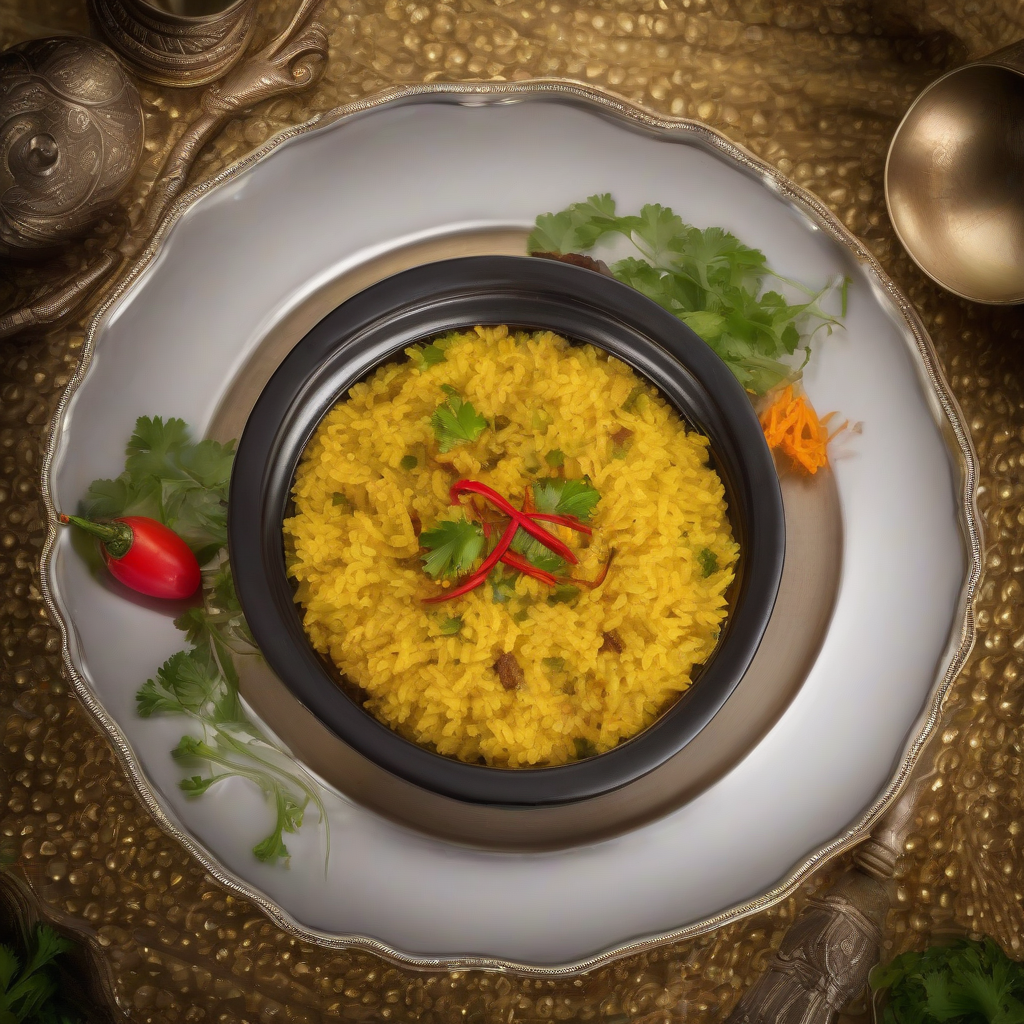Kichdi: Comfort Food Ka Badshah!
Namaste Doston! And a warm Aadaab to all my lovely readers! Chef Curry Do-Pyaza here, back in your kitchens (virtually, of course!) with a dish that’s as comforting as a warm hug on a chilly winter morning. Today, we’re diving deep into the delicious world of Kichdi – the undisputed king of comfort food in India!
Kichdi isn’t just food; it’s an emotion. It’s the taste of home, the flavor of childhood, and the perfect dish for when you’re feeling under the weather or simply craving something soul-satisfying.
When Do We Eat Kichdi?
Kichdi is a versatile dish enjoyed throughout the year, but it holds a special place during certain occasions:
- Makar Sankranti: In many parts of India, Kichdi is a must-have during this harvest festival. It symbolizes prosperity and new beginnings.
- Festivals & Pujas: Often offered as prasad (a blessed offering) during religious ceremonies.
- When You’re Sick: Remember those days when you had a sniffle and your mom lovingly prepared a bowl of warm, soothing Kichdi? Yeah, that’s the magic of this dish!
- Lazy Weeknights: Because let’s face it, sometimes we just want something easy and delicious!
A Little Trip Down Memory Lane: The History of Kichdi
Kichdi boasts a rich history, dating back centuries. Ancient texts mention “krushara,” a dish made of rice and lentils, believed to be the ancestor of our modern Kichdi. Over time, it evolved into the flavorful and diverse dish we know and love today, with each region adding its own unique touch.
Let’s Get Cooking!
Preparation Time: 15 minutes
Cooking Time: 30 minutes
Ingredients:
- 1 cup Chawal (Basmati Rice) – for that fragrant, fluffy texture
- ½ cup Moong Dal (Yellow Split Lentils) – for a creamy, digestible base
- 1 medium Pyaaz (Onion), finely chopped – for a savory foundation
- 1 medium Tamatar (Tomato), finely chopped – for a tangy twist
- 1 inch Adrak (Ginger), grated – for a warm, spicy kick
- 2-3 Hari Mirch (Green Chilies), finely chopped (adjust to your spice level) – for that extra zing!
- 1 teaspoon Haldi Powder (Turmeric Powder) – for color and health benefits
- 1 teaspoon Lal Mirch Powder (Red Chili Powder) – for heat and vibrancy
- 1 teaspoon Dhania Powder (Coriander Powder) – for earthy aroma
- ½ teaspoon Garam Masala – for that signature Indian warmth
- 2 tablespoons Ghee (Clarified Butter) or Oil – for richness and flavor
- Salt to taste
- 4 cups Water
Step-by-Step Instructions:
- Wash and Soak: Gently wash the rice and moong dal together in a bowl. Soak them in water for about 15-20 minutes. This helps them cook evenly and become extra fluffy.
- Sauté the Aromatics: Heat ghee or oil in a pot or pressure cooker over medium heat. Add the chopped pyaaz and sauté until they turn a beautiful golden brown.
- Spice it Up: Add the grated adrak and chopped hari mirch. Sauté for a minute until fragrant.
- Tomato Time: Add the chopped tamatar and cook until they soften and release their juices.
- Powder Power: Add the haldi powder, lal mirch powder, and dhania powder. Sauté for another minute, ensuring the spices don’t burn.
- Rice and Lentils In: Drain the soaked rice and moong dal and add them to the pot. Mix well with the spices.
- Water and Salt: Add 4 cups of water and salt to taste. Bring the mixture to a boil.
- Simmer or Pressure Cook:
- Pot Method: Cover the pot, reduce the heat to low, and simmer for about 20-25 minutes, or until the rice and lentils are cooked and the water is absorbed.
- Pressure Cooker Method: Close the lid of the pressure cooker and cook for 2-3 whistles. Let the pressure release naturally before opening the lid.
- Finishing Touch: Gently fluff the Kichdi with a fork. Sprinkle garam masala over the top and mix well.
- Serve Hot: Serve your delicious Kichdi hot with your favorite accompaniments!
Chef’s Tips for the Best Kichdi:
- Ghee is Key: Using ghee adds a richness and flavor that’s hard to beat.
- Don’t Overcook: Overcooked Kichdi can become mushy. Keep an eye on the cooking time.
- Adjust Water: The amount of water may need to be adjusted depending on the quality of the rice and lentils.
- Spice Level: Feel free to adjust the amount of green chilies and red chili powder to suit your taste.
Kichdi: Your Way!
Kichdi is incredibly versatile! Here are a few ways you can adapt this recipe:
- Gas Stove: Follow the pot method described above.
- Induction Stove: Same as the gas stove method.
- Pressure Cooker: The quickest and easiest method!
- Slow Cooker/Crockpot: Combine all ingredients in the slow cooker, set to low, and cook for 4-6 hours.
- Microwave: Not recommended as it may not cook evenly.
- Air Fryer: Not suitable for this recipe.
- Oven: Not suitable for this recipe.
Nutritional Information (Approximate):
A serving of Kichdi is a good source of carbohydrates, protein, and fiber. It’s also low in fat and easy to digest, making it a healthy and balanced meal.
Serving Suggestions:
Kichdi is delicious on its own, but it’s even better with these accompaniments:
- Dahi (Yogurt) – for a cooling contrast
- Achar (Pickle) – for a tangy kick
- Papad (Poppadums) – for a crispy crunch
- A dollop of ghee – for extra richness
Time to Get Cooking!
So there you have it, folks! My simple, yet incredibly satisfying Kichdi recipe. I urge you to try this recipe at home and share it with your friends and family. They will love you for it!
Happy cooking, and remember to always cook with love!
Until next time,
Chef Curry Do-Pyaza signing off!
